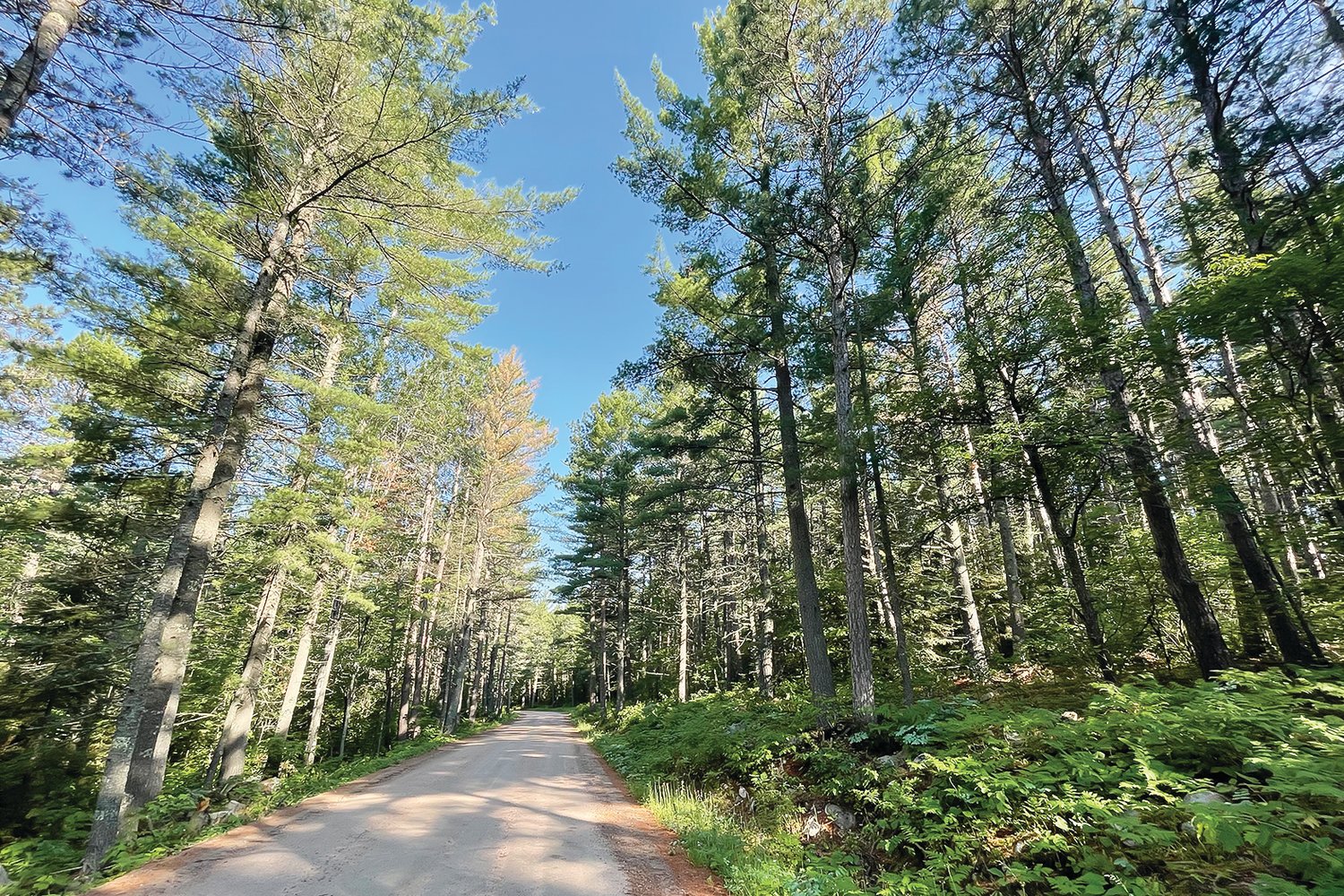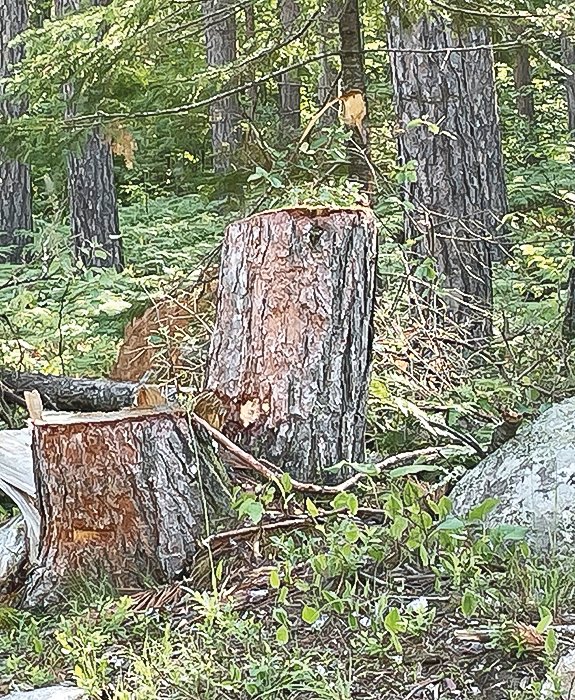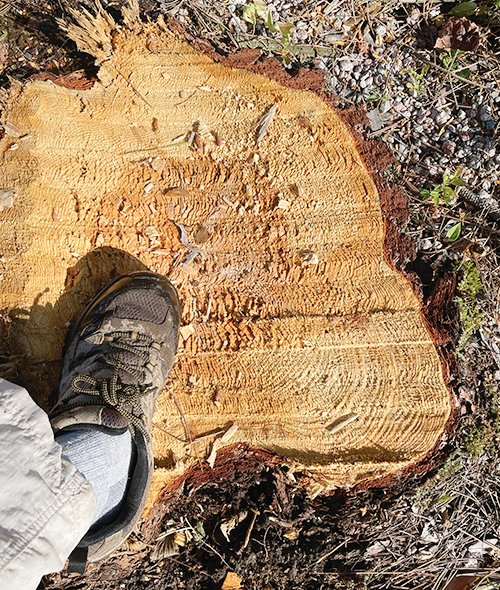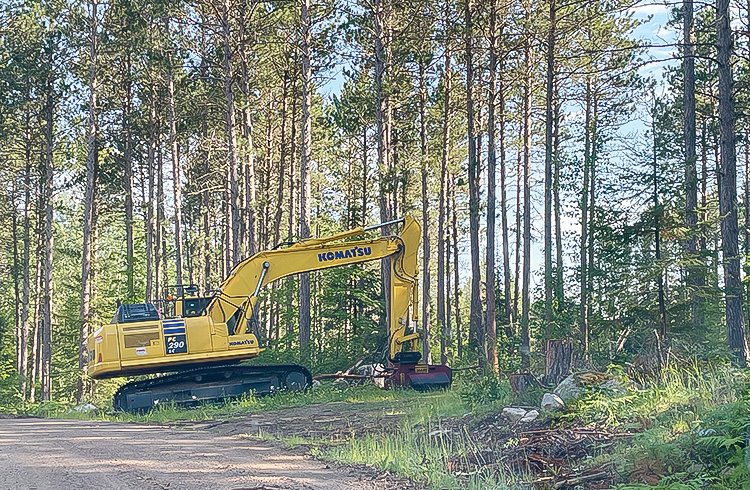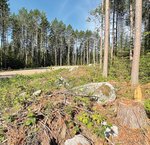Support the Timberjay by making a donation.
Scenery vs. safety
Roadside clearing on the Echo Trail has some area residents seeing red among the green
ECHO TRAIL— Clearing of trees and brush along this iconic roadway within the Superior National Forest is on a temporary hold while St. Louis County officials take stock of work done to date. …
This item is available in full to subscribers.
Attention subscribers
To continue reading, you will need to either log in to your subscriber account, or purchase a new subscription.
If you are a current print subscriber, you can set up a free website account and connect your subscription to it by clicking here.
If you are a digital subscriber with an active, online-only subscription then you already have an account here. Just reset your password if you've not yet logged in to your account on this new site.
Otherwise, click here to view your options for subscribing.
Please log in to continue |
Scenery vs. safety
Roadside clearing on the Echo Trail has some area residents seeing red among the green
ECHO TRAIL— Clearing of trees and brush along this iconic roadway within the Superior National Forest is on a temporary hold while St. Louis County officials take stock of work done to date. Some border country residents have raised alarm over the impact to the scenic qualities of the road, which is a primary access route to a large swath of the western end of the Boundary Waters Canoe Area Wilderness.
“We have no issue with brush clearing,” said Paul Schurke, of Ely, who along with a handful of others, met with Forest Service officials and St. Louis County Commissioner Paul McDonald last week to discuss their concerns. But, he said, the removal of hundreds of large pine and the prospect of additional pine removal, is concerning.
County public works officials say the clearing of the easement is intended to enhance public safety by improving sight lines along the winding road as well as reducing the cost of damage to county equipment, such as snowplows, that occasionally strike trees that crowd the roadway.
Yet the work, in some areas, particularly just west of Big Lake, appeared to go well beyond what could be justified for road safety.
The U.S. Forest Service, which owns most of the property along the road, greenlighted the clearing earlier this year through what’s known as a categorical exclusion, which meant little or no public notification was required. Yet area residents noticed once the work began earlier this spring and some were surprised by what they saw happening on a road that has been considered one of the state’s most scenic.
“I was stunned,” said Leah Rogne, a resident of Greaney, who traveled the Echo Trail recently after hearing about the cutting along the right-of-way. While she said she’s seen county roads that looked worse after similar right-of-way clearing, she noted that the clearing in some places included everything, even large and scenic pine. In some areas, the easement is clearcut back as much as 20-25 feet from the sides of the road.
Residents concerned about the cutting were most worried that it would devastate the scenic value of a about a ten mile stretch of the county road the runs from Hegman Lake up to the north side of Big Lake.
Yet, according to Kawishiwi District Ranger Aaron Kania, the tree cutting along the highway has largely been completed, which means some of the most scenic portions of the road may be preserved for now. Kania, who had been on vacation, was surprised to hear that residents had concerns about the road work along the Echo Trail.
Because the county does not have a formal right-of-way for the road, the Forest Service retained considerable input into the clearing work. And Kania was complimentary of the county’s openness in addressing Forest Service concerns, which may have headed off some of the biggest potential points of conflict. Those included some roadless rule protections around Hegman Lake as well as goshawk habitat around Big Lake and near the Stuart River, which appeared to have reduced the amount of tree cutting in those areas. “We went through the plan pretty much tree-by-tree,” said Kania, who said the Forest Service tried to be conservative with cutting in order to protect the road’s esthetics. “The county came to us and was very willing to discuss our concerns,” said Kania. “We felt we were heard.”
Kania noted that logging as part of the Hi-Lo timber sale is also taking place along that portion of the Echo Trail and that some residents may be confusing the visual impact of the timber sale with the easement clearing.
McDonald said the county still has a brusher up on the Echo Trail, which was sitting between Big Lake and the Portage River as of Monday, and will continue to work along the corridor in the coming days. But the device is not designed to cut larger trees. Kania said that work was completed earlier this year, when the frost was still in the ground and that as far as he is aware, no more large trees are slated for removal. McDonald said some dead or diseased trees are still likely to be cut, but that work will be done in coordination with the Forest Service. “As for the big historic pine, it’s my understanding that those aren’t going,” McDonald added.
Other interests
While the scenic quality of the Echo Trail is exceptional, Kania noted that there are other factors that do weigh in on Forest Service decision-making when it comes to maintenance of a historic and sensitive resource like the trail. Kania noted that some of the handful of residents in the Meander Lake area do travel the road to Ely for work, year-round, and that some of those commuters were relieved to see the work underway. “We’ve also heard from some outfitters who have staff driving that road every day with vans. They’re pretty happy that the road is safer.”
Kania also cited the recent Bezhik Lake Fire as another factor. He said Forest Service modeling had shown that the fire could have potentially reached the Echo Trail and that maintaining a more open corridor could help to make the trail a more effective fire break for firefighters and a safer corridor in the case of evacuations.
“That fire danger is real,” agreed McDonald. “We lost some structures up there this year and I think that’s going to continue to be a real issue,” he said.
Yet others see the historic and scenic qualities of the Echo Trail being left behind. “The decision was made without public input,” said Carla Arneson, of Ely, in a letter she drafted on the subject. “Logging trucks had value, plow trucks had value, protecting those who choose to drive too fast had value, but not the unique beauty of the Echo Trail, unparalleled anywhere in the state of Minnesota,” she added. “Give its beauty the equal value it deserves. We could then work together to give the Echo Trail official historical status and recognition, while at least maintaining a glimpse of its past for future generations.”

